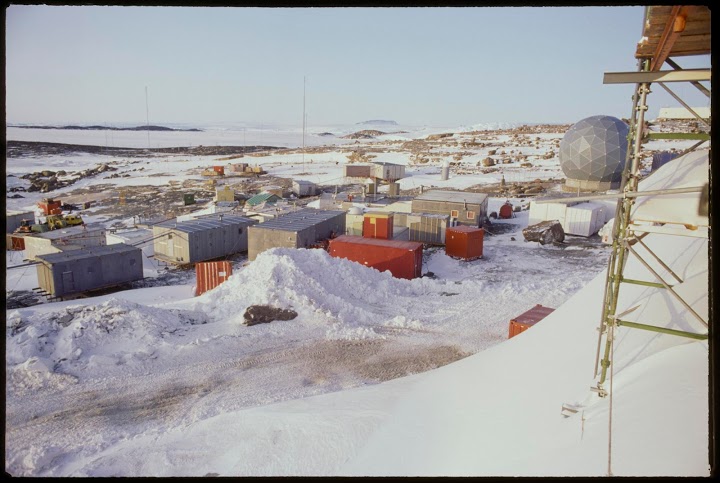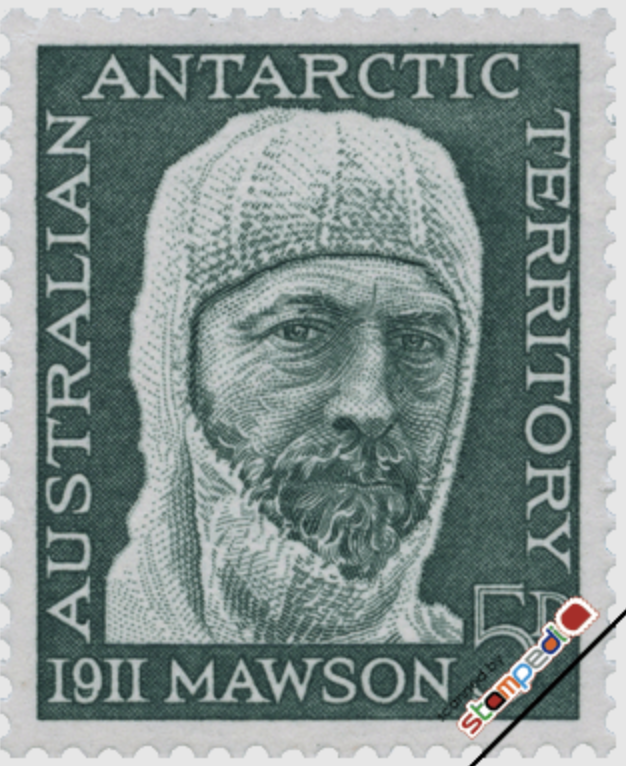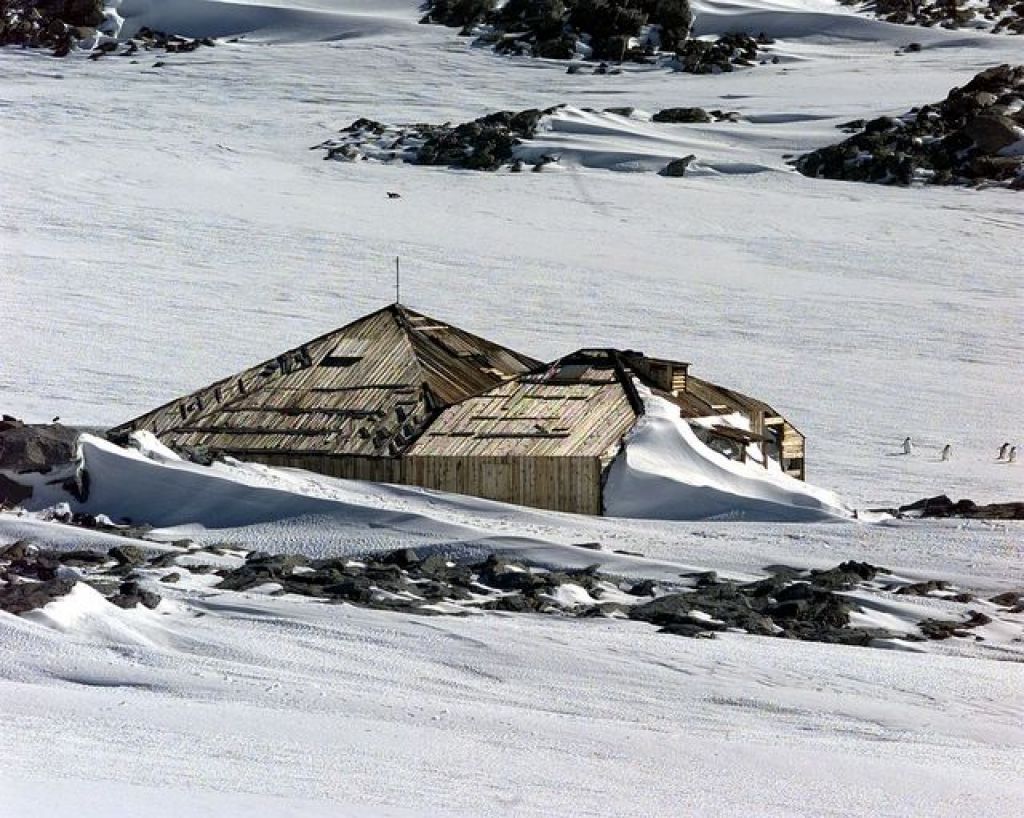10 Best Facts about Sir Douglas Mawson

Sir Douglas Mawson- Photo by Internet Archive Book Images- Wikimedia Commons
If Geology and Exploration are your thing, then the 10 best facts about Sir Douglas Mawson are right up your alley. If the subject, however, is not your cup of tea, these facts make for a very interesting read. Douglas Mawson is a worldwide celebrated geologist and explorer. Raised in South Australia, Mawson studied mining engineering and received a doctorate in science, both, from Sydney University.
Mawson’s inherent interest in expeditions and influence from his mentor and geologist Edgeworth David were largely responsible for his career path.
The below 10 best facts about Sir Douglas Mawson outline his few and far-between achievements. He was the greatest polar explorer Australia ever had.
1. Sir Douglas Mawson Was Adventurous
Douglas Mawson’s field of study and career put him in a position of discovery. His interest in rocks left by melting glaciers was developed while he taught at the University of Adelaide. An adventure seeker, Sir Douglas Mawson could not pass up the opportunity to take on his first expedition to Antarctica when the opportunity presented itself via Nimrod Expedition. He became part of the first group to ever climb Mount Erebus, Antarctica’s second-highest volcano.
From then on, Sir Douglas Mawson hit the mountains- he organized an Australian Antarctic Expedition soon after returning from the first one!
2. Mawson Amassed Awards For His Work

Sir Douglas Mawson in Knights regalia- Wikimedia Commons
Extraordinary achievement and merit in service to Australia and humanity earned Douglas Mawson his knighthood hence the ‘Sir’ title. Mawson was awarded for his explorative and scientific achievements; he was knighted in 1914.
In 1915, he received the Founders Gold Medal from the Royal Geographical Society. This is the highest honor from this society. Additionally, the American Geographical Society awarded him the David Livingstone Centenary Medal in 1916, the Bigsby Medal from the Geological Society of London in 1919, and the Clarke Medal from the Royal Society of New South Wales in 1936.
Mawson was made a Fellow of the Royal Society in 1923. Amongst his honors are several places still in existence to date that were named after him, such as Mawson Peak in Heard Island, Dorsa Mawson which is a wrinkle ridge system on the moon, and Mount Mawson in Tasmania.
Sir Douglas Mawson received many other honors in academia and other societies for his work.
3. Sir Douglas Mawson Was An Author
Douglas Mawson’s motivation besides the thrill of the adventure was to gain and expand scientific knowledge. This he did. While on his expeditions Mawson recorded extensive scientific data collated across his three Antarctic expeditions.
He wrote a book published in 1915, The Home of the Blizzard which was one of his most noteworthy works. Here, Mawson tells stories of his expedition to Antarctica, captivating the reader with his first-hand account of it; daily life in the sub-zero temperatures, the wind, the spirit of the explorers, and a lot more.
Mawson also contributed to and edited the 22- volume Reports of Australasian Antarctic Expeditions.
4. Military Service
It might come as a surprise that Sir Douglas Mawson did indeed serve in the military. This however was within his scope. Mawson served in a scientific capacity in World War 1. He served under the British Ministry of Munitions in 1916, becoming the embarkation officer for shipments of high explosives and poison gas from Britain to Russia.
He was also instrumental during his stint in the Russian Military Commission where he reported on production in Britain so as to increase high explosives output in Russia. He additionally worked for the Commission Internationale de Ravitailement for the British as a Major, dealing with the maintenance of supplies of high explosives, chemicals, poison, gas, and petroleum oil products.
Mawson was also a committee member of the Australian War Museum where he served until 1923.
5. Mawson Was Responsible For Australia’s Antarctic Ownership
Australia has claimed 2,500,000 square miles of the Antarctic continent! This was made possible through Sir Douglas Mawson’s exploration into uncharted territory. He has explored the Antarctic multiple times, and intentionally so- he wanted to enable his country to have some claim to this territory. Perhaps this fueled his rejection of an invitation to go to the Antarctic the second time with non-Australians, electing to go on an Australian- led exploration instead.
6. The Mawson Station, Antarctica

Mawson Station- Photo by Mikeilan- Wikimedia Commons
Sir Douglas Mawson led the first Antarctic research expedition by Australians. He got recognition for this both locally and internationally. Somewhere in Holme Bay in Antarctica lies the Mawson Station, which is the oldest and continuously inhabited Antarctictic station, evidently named after Sir Douglas Mawson.
The station supports several fields such as space weather studies, space and atmospheric physics, geophysics, cosmic ray, glaciology, polar medicine, ecology of seabirds and marine mammals, as well as meteorology.
The station is simply referred to as ‘Mawson’; his name became bigger than himself.
7. Sir Douglas Mawson On A Stamp

Mawsons Australian Antarctic Territory postage stamp- Photo by Australia Post- Wikimedia Commons
Mawson’s face appears on a series of Australian Antarctic Territory Stamps, on the background of Antarctica’s map. This stamp was part of a set of 10 stamps that were released in celebration of the 75th anniversary of the South Magnetic Pole Anniversary Expedition. The stamps also feature ships, scientific instruments, and the Gypsy Moth, all part of what came together to make the expedition successful.
The stamps were released in May of 1988 in time for Mawson’s birthday and bicentennial year.
8. Mawson’s Face Appears On Australian Currency
The Australia100-dollar bill and 1-dollar coin feature the face of Sir Douglas Mawson. The latter was issued in 2012 within the Inspiration Australians series- indeed Mawson was an inspiration to Australia and worldwide for his outstanding expeditions.
The 100-dollar bill has an image of Mawson with the Antarctic Mountains behind him.
9. Gold In Antarctica?

Mawsons hut at Cape Denison- Photo by David Killick- Wikimedia Commons
Sir Douglas Mawson was a Geologist fascinated by the geochemistry of rocks and studied them. He also studied the geological significance of algae and the origin of carbonaceous sediments. He is credited with the discovery of Davidite, a mineral he found in rocks.
Mawson’s geological samples that he collected from Cape Denison in about 1912 were thoroughly examined later and found to contain gold! Mawson did posthumously receive recognition as the first explorer to discover gold in Antarctica.
10. Mawson Survived Antarctica

Antarctica- Photo by Jay Ruzesky wolsenburg- Wikimedia Commons
The challenges and hardships Sir Douglas Mawson must have encountered in the uncharted territories of Antarctica cannot be underestimated. For starters, it is harrowing to imagine riding on sled dogs to explore the region. Mawson and two of his colleagues did this. The story is told of how some 500 kilometers from the Cape Denison base, the three- man team lost a member, 6 of the strongest dogs, and most of their food and tour tent; they went into a crevasse! This happened in 1912.
In the next month, the now two-man team traversed back to base with limited supplies. Mawson was left alone after his colleague consumed toxic dog liver. He did make it back to base, but missed the sailing ship by a whisker! He stayed on in Antarctica for a full year- while the conditions meant a lot of hardship, Sir Douglas Mawson was left with months’ worth of research and findings. Mawson made it out of Antarctica, but as one may predict for a research-hungry and explorative man such as himself, he did go back for more!
Sir Douglas Mawson left quite the legacy- Australia’s claim to Antarctica, as large as 42 percent, and the Australian Antarctic division which operates three scientific and research bases in Antarctica and one on Macquarie Island are no child’s play.
Planning a trip to Paris ? Get ready !
These are Amazon’s best-selling travel products that you may need for coming to Paris.
Bookstore
- The best travel book : Rick Steves – Paris 2023 – Learn more here
- Fodor’s Paris 2024 – Learn more here
Travel Gear
- Venture Pal Lightweight Backpack – Learn more here
- Samsonite Winfield 2 28″ Luggage – Learn more here
- Swig Savvy’s Stainless Steel Insulated Water Bottle – Learn more here
Check Amazon’s best-seller list for the most popular travel accessories. We sometimes read this list just to find out what new travel products people are buying.












